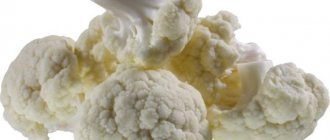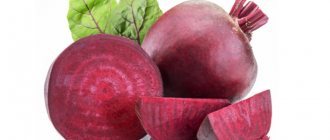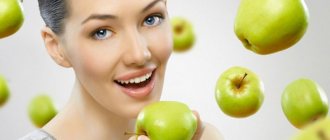Cooking features
Sausage cheese differs from other types due to the piquant taste and pleasant aroma that the product acquired after smoking. This cheese is a type of processed cheese, for the preparation of which soft or hard rennet cheeses are used. They also add here:
- oil;
- sour cream;
- powdered milk or cream;
- all kinds of spices and food additives.
The cheese dough is packaged in a specially prepared cellophane wrapper, secured securely, and then smoked. This process is very similar to smoking sausages.
mozzarella cheese - benefits and harm
Cheese production algorithm
Sausage cheese
Production requires following certain action algorithms:
- At the initial stage, hard varieties of cheese are crushed. This must be done for easier and more uniform melting of the product.
- The next step will be to prepare all components for the start of melting.
- After this, all the necessary ingredients are loaded into a special technique, which mixes the components.
- After this, the entire mass warms up to ninety-five degrees. In the process, a dissolved homogeneous mass is formed. An important point at this stage is to bring the product to the desired condition, eliminating lumps and overheating.
- The last, final stage is carried out after the mixture has partially cooled. The warm mass is packaged in special bags in which the mass takes the shape of a sausage. Hence the name – sausage cheese.
Some varieties are ready for sale, but most often, packages with cheese mass are subject to smoking. Subject to the correct smoking technology, natural materials are used: tree bark, sawdust. Preference is given to the following trees: oak, birch and ash.
Read
About preparing celandine
Sausage cheese - saturating the body with complete proteins and fats
Sausage cheese is not only tasty, but also very healthy. First of all, the merit of the fact that cheese has a healing effect lies in its high protein content. These substances are necessary so that the body can produce the energy that is needed for the functioning of all systems and organs. Proteins also serve as the building material from which, after complex processes, the synthesis of cells and tissues begins. Many hormones and antibodies consist partly or entirely of protein. Therefore, it is so necessary to include in your diet foods that contain large amounts of this element.
The advantage of sausage cheese is that it contains the most beneficial proteins. These substances contain amino acids. And here it is important to note the fact that not all of them can be synthesized in the human body, therefore they must be supplied together with other foods.
There is also a high content of fat in sausage cheese, which performs a protective function. Distributed throughout the body, they protect internal organs from the effects of shock, do not allow organs to move, and due to the fact that they have low thermal conductivity, they maintain the desired body temperature. Fat is involved in many metabolic processes, enriching the body with vitamins, fatty acids and other beneficial substances.
But, despite the high fat content, the calorie content of this type of cheese is much lower compared to hard cheeses.
Calorie content and chemical composition
Let's consider how many calories this product contains - it is by no means dietary: there are 275 kcal per 100 grams. In addition, it contains:
- ash - 4 g;
- starch - 0.2 g;
- cholesterol - 57 mg;
- mono- and disaccharide - 3.5 g;
- saturated fatty acids - 9.4 g;
- water - 51.6 g;
- organic acids - 0.4 g.
Did you know?
The most famous book about cheese is the treatise “On the Cheese Business,” which was written by the Frenchman Andre Simon over the course of 17 years. The book tells you how to cook 839 different varieties. The product is rich in vitamins:
- A - 0.14 mg;
- PP - 0.2 mg;
- B1 - 0.04 mg;
- B2 - 0.35 mg;
- B5 - 0.6 mg;
- B6 - 0.1 mg;
- B9 - 14 mcg;
- B12 - 0.3 mcg;
- C - 0.7 mg;
- D - 0.62 μg;
- E - 0.4 mg;
- H - 3.6 μg;
- RR - 6 mg;
- and beta-carotene - 0.06 mg.
It contains a lot of minerals:
- gland;
- zinc;
- copper;
- sulfur;
- phosphorus;
- potassium;
- sodium;
- magnesium;
- calcium.
Let's consider how many proteins, fats and carbohydrates are contained in the product:
- proteins - 21.2 g;
- fat - 19.4 g;
- carbohydrates - 3.7 g.
Sausage cheese carbohydrates and their benefits for humans
Since this cheese contains milk powder, which contains a large amount of carbohydrates, this means that lovers of sausage cheese receive an additional source of energy. Scientists have long found out that carbohydrates ensure normal functioning of the heart, liver and muscles, monitor the concentration of sugar in the blood, and are an excellent stimulant of the nervous system. Carbohydrates are also indispensable for the intestines, as they turn out to be a life-giving medium for the development of lactic acid microorganisms. They prevent various purulent processes from developing, normalizing the microflora, which affects a person’s life expectancy.
processed cheese - benefits and harms
Components of sausage cheese and their beneficial properties
Sausage cheese also contains other substances that are no less necessary for maintaining health, and which are absorbed more easily and quickly from fermented milk products. First of all this:
- Calcium.
It is distinguished by its increased content in sausage cheese, unlike many other food products. Thanks to this element, teeth, bones and muscles will be healthy, physical and mental activity will be normalized. Calcium is best absorbed if protein is present, which is why sausage cheese is necessary for children and people actively involved in physical and mental labor. - Sodium.
Regulates water-salt balance and supports the cardiovascular system. - Phosphorus.
Necessary for maintaining tissues - bone, brain and nerves, helps the musculoskeletal system function normally. This cheese contains a harmonious combination of phosphorus and calcium, which are completely absorbed by the body. - Sausage cheese cannot boast of an abundance of vitamins, but it still contains them in small quantities. He has:
- Beta carotene.
It is a provitamin of retinol. Protects against infectious and oncological diseases, normalizes vision. - Vitamin C.
This vitamin is essential for redox functions. - Vitamin D.
Regulates metabolic processes in which calcium and phosphorus participate. - B vitamins.
They are necessary during fat and carbohydrate metabolism, improve the functioning of the nervous and brain systems, especially when their increased activity is required.
Blue cheese - benefits and harm
Calorie content of hard cheese: calorie table
Anyone who is partial to cheese, the leader in the popularity rating of fermented milk products, should take into account its energy value when creating a healthy diet.
The calorie content of hard cheese, the fattest and most nutritious type, is high and varies from 350 to 420 kcal per 100 g of product.
This indicator depends on the variety associated with the technology of its production and the fat content of the milk used.
Kinds
Numerous varieties of hard cheeses are produced using two methods: boiling or drying with the addition of lactic acid bacteria and enzymes that stimulate the milk coagulation process. This product can mature from three months to three years.
A special niche is occupied by extra-hard cheeses (Italian Parmesan or Swiss Sbrinz), which wait from two to ten years to be ready. The famous Parmesan cheese becomes the hardest product when ripe.
It is split with a knife resembling a chisel, as well as with a special hammer that hits the metal insert on the handle of the knife.
If the calorie content of Swiss hard cheese of the Sbrinz variety is 429 kcal per 100 g of product, then Italian parmesan is a more dietary option, its energy value is 292 kcal per 100 g.
https://www.youtube.com/watch?v=w45Nejk3OJM
Extra-hard cheeses are used to prepare gourmet dishes either in grated form or in small crushed pieces. They are also served ready-made in thin shavings as an appetizer with wine.
The varieties of hard cheeses include: naturally ripened cheeses (Gouda, Edamer, Maasdam), gourmet blue cheeses (Blau Bastianse, Delfts Blau), peasant cheeses (Beemster, Stolweiker) ), smoked (“Gouda”) or with a red rind (“Doruvael”).
The calorie content of hard cheese depends on its fat content, which in Parmesan is 32%, in Dutch cheese - 45%, in Swiss cheese - 50%. It is known that the higher this indicator is for a popular fermented milk product, the tastier it is.
Hard cheeses in Russia are produced: “Dutch”, which corresponds to “Edamsky” from the Netherlands, “Swiss”, English “Cheddar”, “Kostromskoy”, “Rossiysky”, “Sovetsky”, “Yaroslavsky”, “Altaisky” and “Gornoaltaisky” ", "Moscow", "Caucasian", Brie President cheese, smoked varieties and others.
Cheese contains 26–28% protein, which is absorbed by the human body much better than meat. Nutritionists call solid varieties “concentrated milk” because sometimes a small piece of cheese for breakfast (30–50 g) can replace 300–400 ml of valuable liquid.
The high calorie content of hard cheese is associated with the high lipid content in milk (20-28%). They are also rich in vitamins: A, group B (B1, B2, B6, B9, B12), PP, E and C. The product described contains many minerals: zinc, calcium, copper, manganese, sodium, iron, magnesium, potassium , phosphorus.
Milk fat has a low-melting structure and a large amount of phosphotites, which contribute to its almost complete absorption (98-99%).
Benefit
When consuming hard cheese, which is high in calories, you need to monitor portions in moderation and a sufficient amount of physical activity. This will help burn off the excess energy gained from the nutritious product.
But hard cheeses, if eaten regularly in sufficient quantities, provide a person with the essential amino acids they contain: tryptophan, methionine and lysine. The first helps reduce appetite and is involved in the synthesis of vitamin B3, which is necessary for brain activity.
In turn, lysine and methionine help break down fats and slow down the aging process of cells.
Calorie table for different types of hard cheese
Despite the benefits that hard cheese provides to the body, the calorie content in 100 grams of any type of this product is 17-20% of the total daily diet. Anyone who is watching their figure or their blood cholesterol levels should consume no more than 20–50 g of mature cheese per day.
| Cheese varieties | Fat content | Energy value in kcal per 100 g |
| "Dutch" "Gouda" "Edamian" | 45 % | 340-356 |
| "Gouda" | 48% | 361-362 |
| "Kostroma" | 45% | 345 |
| "Russian" | 45-50% | 337-366 |
| Kondrovo Russian “Olterber” | 50% | 355 |
| "Dobryan" Russian | 50% | 360 |
| "Soviet" | 50% | 356 |
| "Poshekhonsky" | 45% | 350 |
| "Uglichsky" | 45% | 335-347 |
| "Yaroslavsky" | 45% | 361 |
| "Swiss" | 50% | 335-380 |
| "Altaic" | 50% | 355 |
| "Ozerny" | 50% | 350 |
| "Steppe" | 45% | 362 |
| "Cheddar" | 50% | 392-405 |
| "Kaunas" | 30% | 355 |
| "Latvian" | 45% | 316 |
| "Lithuanian" | 30% | 250-338 |
| Lithuanian "Gouda", "Edam" | 45% | 334 |
| "Altaic" | 50% | 356 |
| "Chester" | 50% | 363 |
| Cheese with mushrooms | 50 % | 395 |
| "Emmental" | 45 % | 420 |
| "Parmesan" | 32% | 292 |
| "Gruyere" | 49% | 396 |
| "Munster" | 45% | 365 |
| "Lambert" | 50% | 377 |
| "Appenzeller" | 50 % | 400 |
| "Edamer" | 40 % | 340 |
| "Etorki" (sheep) | 50% | 401 |
| "Roquefort" | 45% | 332-369 |
| "Limburger" | 28% | 327 |
| "Oltermani" | 55% | 400 |
| "Maasdam" | 45% | 340-360 |
When preparing dishes or snacks, hard cheese is often grated to create an appetizing crust. A teaspoon of this delicacy contains 8 g, from which you can get 30 kcal.
A tablespoon of grated hard cheese contains 25 g, the calorie content of the product is 94 kcal.
A glass (200 ml) contains 320 g of hard grated cheese with a calorie content of 1200 kcal, and a cup (250 ml) contains 400 g and 1500 kcal, respectively.
Energy value of “Russian” cheese
One of the most popular domestic cheeses, Rossiysky, is produced today in Russia and some neighboring countries. The characteristic features of this type of hard cheese are its pronounced, delicate taste and “fine lace” pattern.
“Russian” cheese is prepared from pasteurized milk obtained from cows with the addition of rennet and lactic acid bacteria. The product is aged for 2.5 months and then goes to stores. The calorie content of “Rossiyskiy” hard cheese can vary from 337 to 366 kcal.
Milk protein is approximately 23%, lipids - about 30% (in dry weight, the fat content of the product does not exceed 50%). This type of cheese is rich in vitamins B, A, E, D and PP. Per 100 g of product there are 0.88 g of calcium, 0.81 g of sodium, 88 mg of potassium and 0.5 g of phosphorus.
“Russian” cheese with 45% fat content contains 337 kcal per 100 g of product, the calorie content of hard cheese with 50% fat content (of the same variety) is 358 kcal, and the energy value of Russian “Como” is 363 kcal.
Harm and contraindications
When buying your favorite product, you need to pay attention to its natural composition: adding vegetable fats (palm oil) reduces its cost and significantly deteriorates its quality. It should also be taken into account that people suffering from gastrointestinal problems are prohibited from eating spicy varieties of the described product.
Sometimes hard cheese, whose calorie content may be small, causes headaches, migraine attacks or nightmares. This harm is caused by an excess of the amino acid tryptophan coming from cheese.
If you overuse solid varieties of the product, this can become a trigger for the occurrence of excess cholesterol in the blood, blood thickening, hypertension or atherosclerosis.
Blue cheese (hard), the calorie content of which is 340-353 kcal per 100 g of a savory product, is prohibited in the diet of pregnant women, since some products with mold contain a dangerous amount of bacteria that cause listeriosis. This disease can lead to problems with pregnancy and birth.
For fitness nutrition
The beneficial properties of hard cheeses are a godsend for a vegetarian menu or for those who want to diversify their protein diet. They act as a replacement for meat or fish. Protein is involved in the formation of muscles and organs, and phosphorus and calcium strengthen the structure of joints and bones.
When choosing hard cheeses for your diet while losing weight, you need to pay attention to the product label, which indicates the exact energy value of the product in calories. For example, the calorie content of hard cheese with 45% fat content can vary from 310 kcal to 420 kcal.
At the same time, Cheddar cheese can be produced with either a fat content of 49-50% (405 kcal) or 33%. The calorie content in the second case will be only 380 kcal. A dietary version of this cheese called “Cheddar” contains only 18% fat and has only 282 kcal.
At the same time, milk fat is absorbed by the human body quite easily, but a high percentage of lipids can hinder weight loss. Therefore, when losing weight, it is more advisable to eat no more than two cheese slices (plates) in the first half of the day.
You can also consume no more than 20 g of your favorite hard cheese before lunch, but no more than twice a week. The product helps maintain muscle mass and health while fighting extra pounds, but it is necessary to ensure sufficient physical activity.
Products you will need: 1 kg of zucchini, 15 g of sunflower oil, 40 g of corn flour, 1-2 eggs, 200 g of Adyghe cheese and 150 g of “Russian” cheese, 1-2 cloves of garlic (to taste), fresh parsley. In order to prepare a delicious dietary casserole, grate the zucchini on a coarse grater and sprinkle with salt.
Then they are allowed to settle and the excess liquid is drained, squeezing out the mass. Add grated cheese, chopped parsley, favorite spices, squeeze out the garlic. Mix with flour and egg, giving the mass homogeneity. Grease a baking tray with oil, pour the future casserole onto it and level the surface. Sprinkle with cheese and bake at 180 degrees for 30-40 minutes.
The calorie content of this dish is 156 kcal per 100 g of casserole.
Source: https://FB.ru/article/308499/kaloriynost-tverdogo-syira-tablitsa-kaloriynosti
Selection of good charcuterie cheese
- To truly enjoy eating sausage cheese, you must first become familiar with the composition of the chosen product. If it is indicated that it contains a lot of vegetable fats, then its quality is low, in which case it belongs to the category of a cheese product.
- Doubtful flavor enhancers, artificial colors or strange additives do not improve the quality.
- You should also pay attention to the surface layer of the product. Evidence of good quality is, first of all, a light surface, a uniform consistency, with the absence of bubbles and all kinds of cracks, even minor ones.
- When the cheese is cut, it should not crumble, and the cut area should remain smooth and shiny. Most often, the consistency is brittle if the acidity of the milk has been increased.
- If the cheese was smoked in compliance with the correct technology, without violations, under the shell there should be a truly smoked crust, with a pleasant aroma, which indicates that the processing was carried out on sawdust. If you used liquid smoke, it will not give such a smell.
- If the smell has a sour tint, there is no need to buy cheese. Most likely, irreversible putrefactive processes develop in it.
- Cheese may not be stored correctly. If the temperature was too low during the ripening period, then peptones accumulate in the cheese - they provoke the appearance of a bitter taste.
Adyghe cheese - benefits and harm
The dangers of smoked cheese
Not all manufacturers try to maintain the technology and required ingredients when producing sausage cheese, so the product may not always be considered healthy and of high quality.
Manufacturers, in order to reduce costs during production, as well as achieve longer shelf life, try to add components that were not originally included in the product. For example, instead of high-quality butter, cheap vegetable fat is included in the composition. Violating the technology, the composition contains various emulsifiers, artificial colors, and various flavor enhancers. At the same time, consumer qualities are improved, but the quality of the cheese itself suffers.
If liquid smoke is used during smoking, rather than natural sawdust, the danger is posed by the cheap flavoring used, which may contain phenols, resins dangerous to humans, aromatic carbohydrates and other substances with carcinogenic properties.










